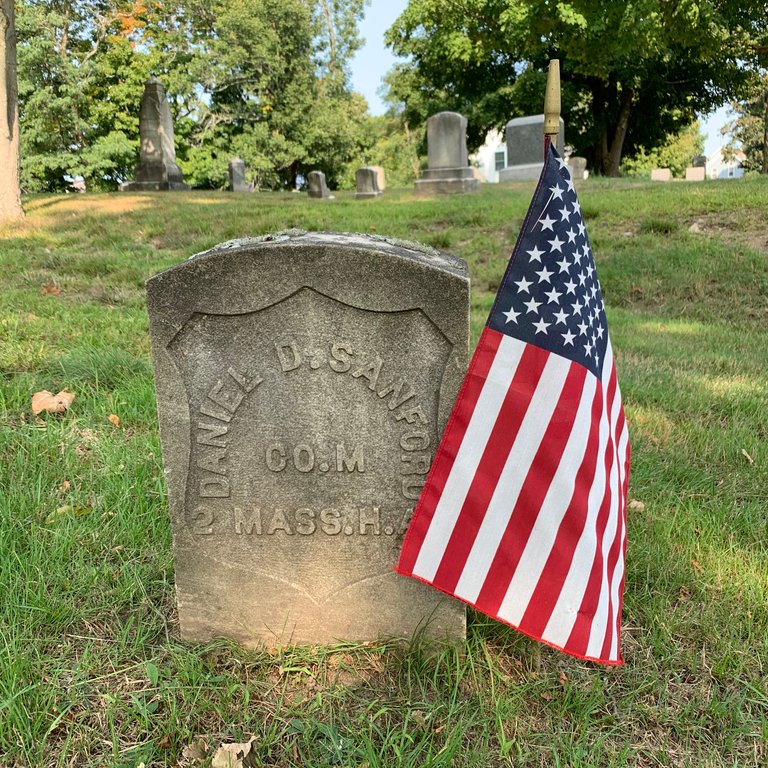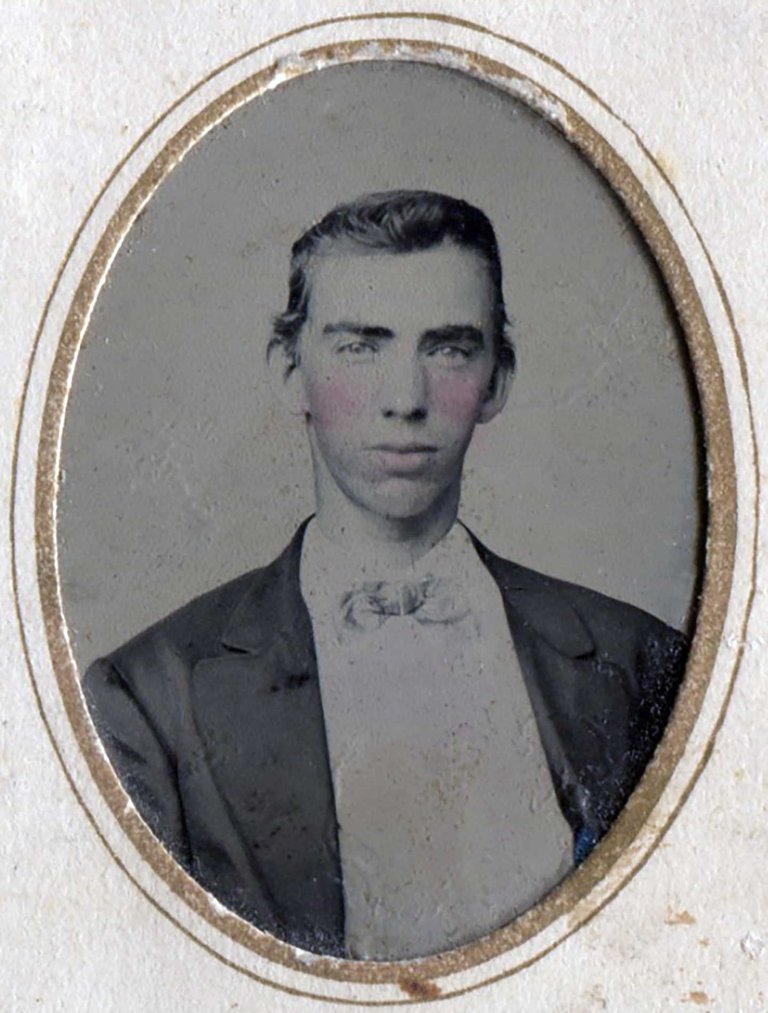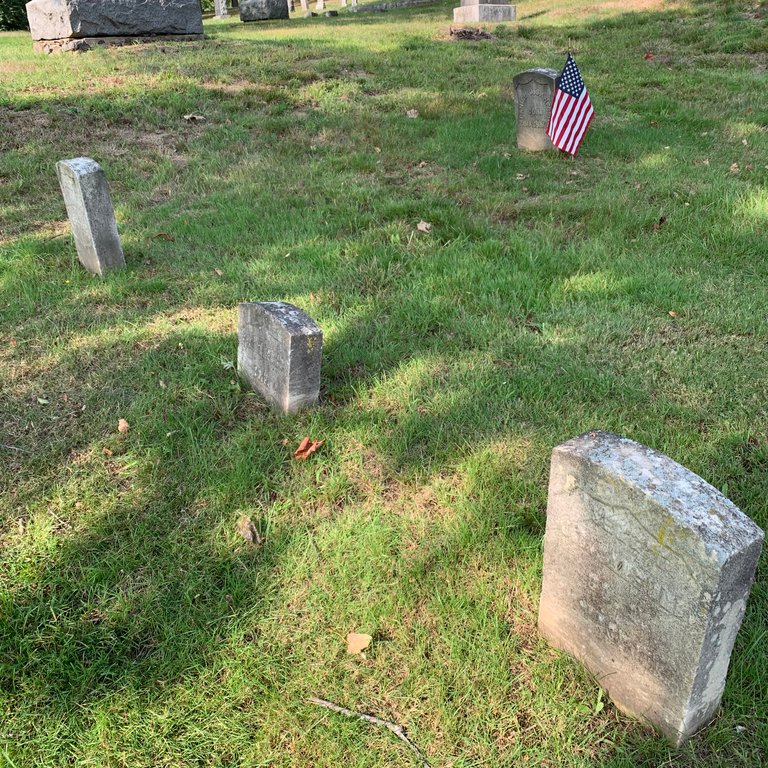
One of my hobbies is locating and photographing graves for family members who cannot travel to see them. I use the Find-a-Grave website to find the requests, then use my dog walking time to find the graves. The dogs aren't too keen on stopping and waiting for me, but they're getting used to it.
In my own family research, I am familiar with my gg grandfather, Benjamin Flick, who enlisted at 16 years old (he lied about his age) to fight for the Union. He was stationed at "Fortress Monroe," in Virginia. He was wounded in the leg, and died an invalid in 1896 at around 50 years old. His wife received about $8 a month in pension. We're not 100% sure, but this is likely his photograph:

I visited his grave in Philadelphia, and am always reminded of it when I see other Civil War headstones of the same make. It turns out these stones all come from the marble quarries of Western Massachusetts, in the town of Lee. You can learn more about them here.
I also found this information on the website of the National Cemetery Administration:
"Pre-World War I Era Headstones and Markers
There are specific styles of upright marble headstones to mark the graves of Civil War Union soldiers and Spanish-American War dead. These historical styles were reintroduced recently and are inscribed in raised lettering inside a recessed shield. These recessed-shield headstones are available in three marble (X) sizes or one granite (Y) size. “A” is 12” wide, 3” thick, and 42” high, ”B” is 13” wide, 3” thick and 42” high, and “C” is 10” wide, 3” thick and 39” high. To request a historical upright marble headstone, check the Upright Marble in block 11 and write “XA”, “XB”, or “XC” above it or to request the granite recessed-shield headstone, check the Upright Granite in block 11 and write “YA” above it.
Civil War Union and Spanish American War headstone example
The inscription on the recessed-shield headstone is limited. For Civil War Union and Spanish American War, a shield is inscribed which encompasses the arched name and abbreviated military organization. Because of the special design and historical uniform significance, no emblem of belief or additional inscription may be inscribed. The dates of birth and death are inscribed below the shield."
On my journeys, I often see these stones. This week, a grouping of three of them caught my attention. The first, posted above, is behind these three:

All four are Sanfords. Is this a father and his three boys? It's terrible to think of a family in Massachusetts sending four of its own to fight far away, and to lose so much. I've been unable to find more information about them, but the search isn't over.
Sometimes I think I should photograph all of these graves to add to the website. Each year the inscriptions are harder and harder to read. What do you think? Have you seen these types of stones near you? Did you ever wonder about them? I'd love to hear about it!